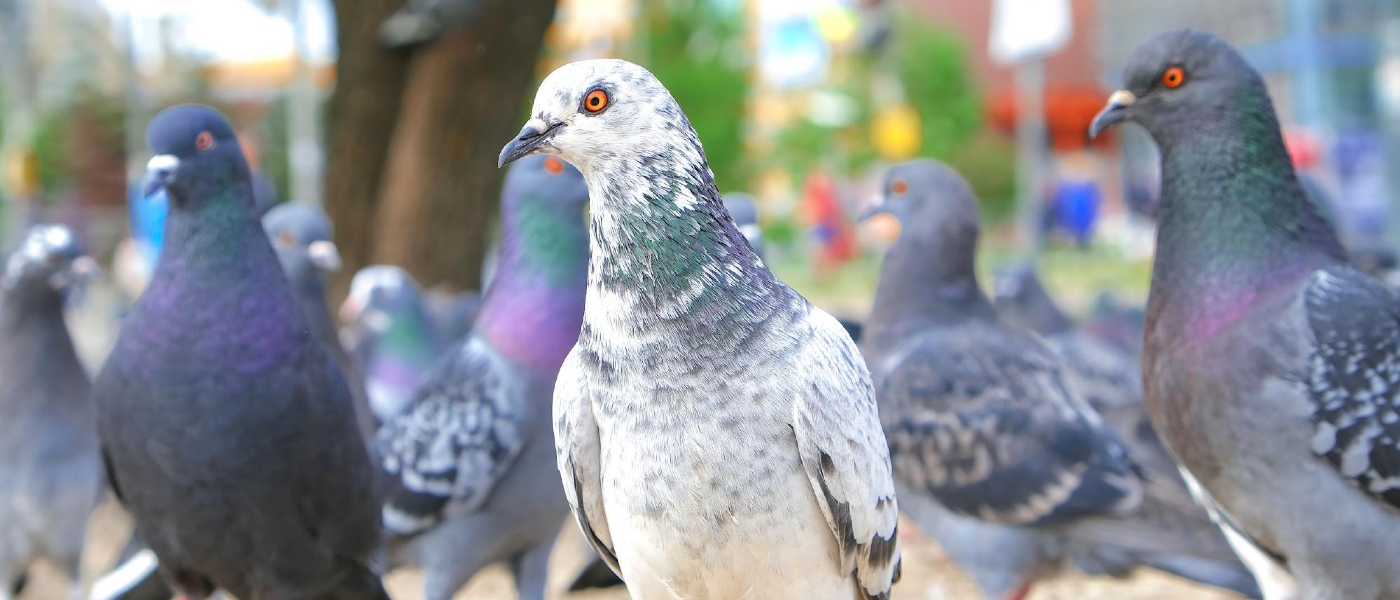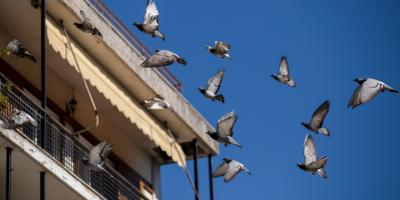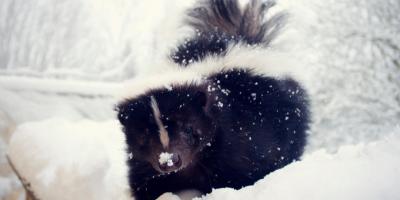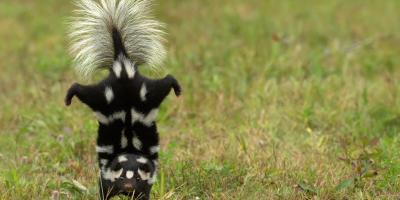Feathered Pests: Do I Need to Worry About Birds in the Winter?

If you think your bird troubles are going to fly south for the winter, think again. The three most common problem birds in New England—pigeons, house sparrows and European starlings—are non-migratory, meaning they stay local all winter long. That’s especially troublesome if you run a commercial warehouse or other business with high ceilings, where birds just love to make a home among the rafters—every month of the year.
Doorways, transoms and signage also attract high-flying squatters, whose overhead nests make a mess of both your building and the walkways below, where excrement is the last thing your customers want greeting them as they enter your store. Generally speaking, birds aren’t considered pests and most of the time should be left well enough alone; however, if your business is attracting too many of them, there are a few things you can do about it.
Banish these Birds from Your Business
Pigeons are particularly problematic in urban areas, where they find plenty of places to roost and nest, and the threat they pose to human health is significant. Pigeons can spread diseases like encephalitis, histoplasmosis, toxoplasmosis and salmonella, and they carry fleas, ticks and mites that can also pose a threat to humans and pets.
House sparrows, too, are fond of making a home of gutters, vents, soffits and rafters; and they especially love warehouses. They prefer to nest close to humans, on whom they depend for the leftover scraps of food and discarded leftovers that they’ve come to rely on as a food source. They, too, are vectors for a variety of diseases and parasites.
And finally, starlings, with their incessant vocalizations (especially at the crack of dawn) and the filth of their waste and nesting materials, are particularly troublesome. They pester farmers especially, as they’ve learned to love poultry, hog and cattle feed, which they consume in large amounts. They also feast on lawn insects, leaving behind unsightly holes in the sod. Just like pigeons and sparrows, they spread pathogens that can affect both humans and pets.
And to make matters even worse, all three of these species drive out the birds that people would actually like to stick around—songbirds, such as titmice and finches.
Safe Prevention Strategies
The most effective bird deterrents are bird spikes and bird slopes. Bird spikes are exactly what they sound like—rows of spikes that are too pointed and small for birds to effectively land on. They don’t hurt the birds, but rather just make it difficult to comfortably sit or nest. They can be placed on rooflines, HVAC units, walls, signage and other elevated areas where birds like to congregate.
Bird slopes do the same thing but in a different way by creating an angled, slippery surface that birds can’t perch upon without sliding down. Although birds may attempt to land on a bird slope, after a few unsuccessful attempts they fly away in search of another landing pad. Bird slopes fit under eaves and other 90-degree elevated areas, are simple to install and are marginally more attractive than bird spikes.
Before you let bird problems become an albatross around your neck, it’s best to leave it to the professionals to keep your facility free of nuisance wildlife any time of the year. Contact us for a free consultation.



